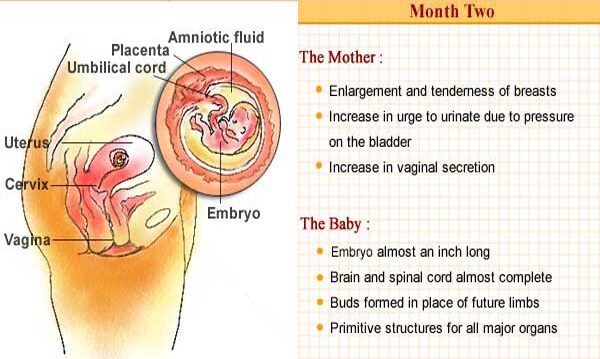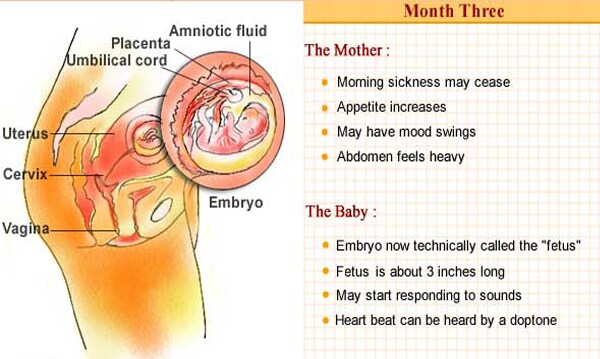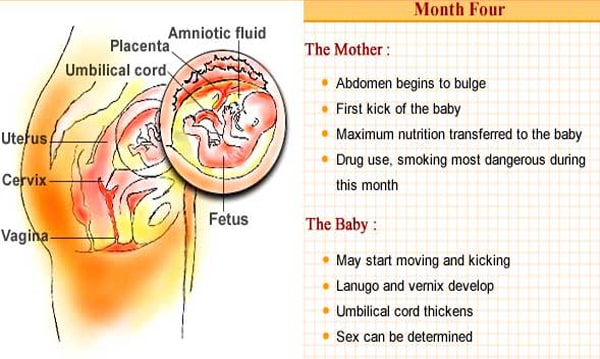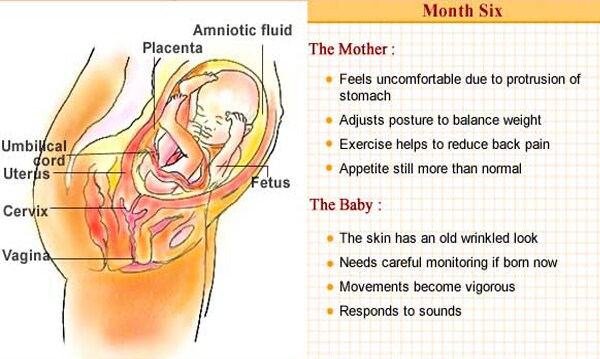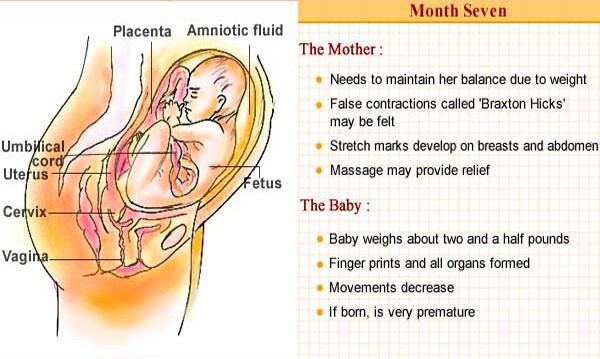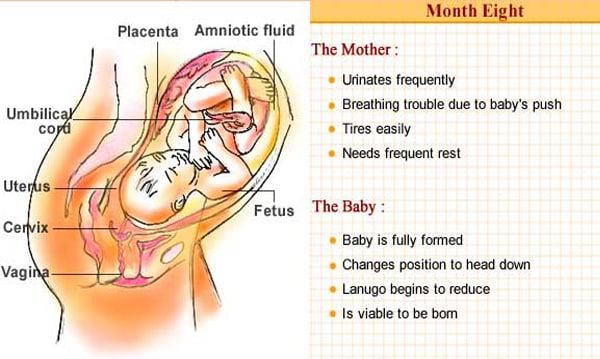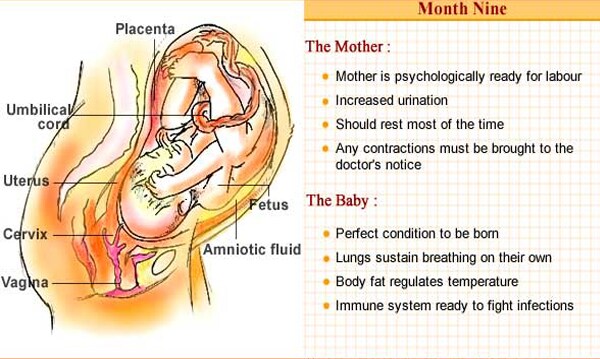Health Photos
-
The month starts with the implanting of the embryo in the lining of the uterus. By the end of the first month, the embryo is about one tenth of an inch long (the size of a grain of rice). The mother may start feeling nauseous in the morning, a condition termed as "morning sickness".
-
The embryo begins to grow in length. By the end of the second month, it is almost an inch long. The expectant mother may feel an increased urge to urinate because of increased pressure from the uterus due to the growing fetus.
-
The embryo in the third month is technically called the fetus. The fetus is now longer and the external features begin to be distinguished. The baby's heart beat can be heard by an instrument called a doppler.
-
The mother may feel the baby's first kick during the fourth month. The baby continues to grow and needs more nutrition. The baby is about 7 inches long and has fine hair on her body called 'lanugo'.
-
This is a month of rapid growth for the baby. The baby gains maximum length and weight in this month. By the end of the month, she is approximately 30 cm long and weighs almost 400 gm.
-
The baby's skin has an old wrinkled look to it even though fat deposits under the skin start to form. The eyes open in this month. Movements become very vigorous and the baby responds perceptibly to sounds.
-
The baby weighs about two and a half pounds in the beginning of this month and is viable to be born, though still very premature. Finger prints are set and all organs are more or less fully formed. Fingernails form to cover the finger tips.
-
The baby is fully formed now and is only undergoing cosmetic changes. The lanugo begins to reduce and the baby changes position to head down, ready to be born.
-
The baby is in a perfect condition to be born. The lungs are able to sustain breathing on their own. The mother is also psychologically ready to go into labour.



